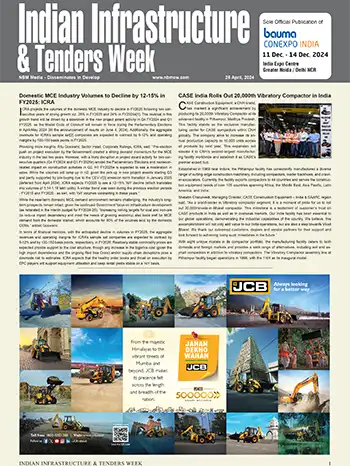Mathematical Performance Models for Reinforced Concrete Structures
Sanjeev Kumar Verma, Research Scholar, Civil Engineering Dept., Univ. Institute of Technology, Rajiv Gandhi Technological Univ., Bhopal, Sudhir Singh Bhadauria, Director, S.G.S. Institute of Technology and Science, Indore, and Saleem Akhtar, Professor and Head, Civil Engineering Dept., Univ. Institute of Technology, Rajiv Gandhi Technological Univ., Bhopal. (MP)
Introduction
Models based on theoretical description of physical or chemical deterioration mechanisms of RC structures by applying suitable boundary conditions have been categorized as Mathematical models by most of the researchers. Deterioration of a RC structure through physical or chemical damage results in performance degradation of structures with time. Physical damage occurs due to fire, abrasion or expansion and contraction stresses while chemical damage occurs due to harsh environment. Deterioration of structures with high compressive strength is a significant problem. Therefore, effective methods for the damage evaluation and performance modeling during life of structures are required. Strength is a significant factor for the performance of structures, however, other factors like environmental or exposure conditions are equally important for the service life of structures. Corrosion of embedded steel bars in RC structures is a major factor governing the performance, service life and durability of structures. Corrosion costs enormous for inspection, evaluation and maintenance of RC structures.Much researches had been carried out in past to investigate the performance of concrete structures under chemical attack. However, in many practical applications it has been identified that chemical attack and mechanical stresses take place simultaneously and combined effect of these two mechanisms is responsible for performance degradation of concrete structures (Schneider and Chen, 1998) [1]. Crack growth due to expansion of corrosion products has been recognized as an important factor for durability of structures by Benin et al. (2010) [2]. From the analysis performed by Bastidas-Arteaga et al. (2008) [3], the failure probability of bridge girders depends highly on the corrosion rate, surface chloride concentration and the traffic frequency. According to Song and Saraswathy (2007) [4] corrosion of rebar is identified as a major deterioration process for concrete structures. Melchers et al. (2007) [5] considered the influence of corrosion and its initiation coupled with applied loads and impact of internal damage for determining structural deterioration of RC Beams under saline environment corrosion. Song and Kwon (2007) [6] considered carbonation as the major cause of deterioration and found that during carbonation process permeability of concrete changes due to change in capillary porosity. Durham et al. (2007) [7] inspected several precast concrete bridges to identify the causes of deterioration and concluded that deterioration was mainly due to longitudinal cracks (caused corrosion of steel bars) and flexure cracks (overloading of live-loads). According to Amleh and Mirza (2004) [8] chloride content, quality of concrete cover and electrical resistivity of concrete have significant effects on the rebar corrosion. According to Snathanam et al.(2001) [9] sulfate attack is one of the major causes of deterioration and estimating remaining service life of structures exposed to sulfate attack is important in order to develop repair and maintenance schedule.
Above discussion reveals that major mechanisms responsible for performance degradation of RC structures are corrosion induced by chloride or carbonation attack, sulfate attack and combined effect of chemical and physical attacks. These mechanisms are modeled by several researchers to developed performance models, several models are presented in the next section.
This is a premium article available exclusively for our subscribers.
If you are already a subscriber, please Login
If not, subscribe now and get access to well researched articles & reports on infrastructure construction, equipment & machinery, innovations & technology, project reports, case studies, and more. All this by simply paying just ₹200/- for a month of complete portal access, or a discounted rate of ₹1000/- for a full year of access.
NBM&CW December 2013


















